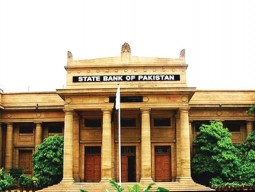
In absolute terms, NPLs stood at Rs604 billion in Q1CY17, down 2.42% compared to Rs619 billion in the same period of last year, according to the SBP’s Quarterly Performance Review (QPR) of the Banking Sector for the quarter ended March 31, 2017.
The NPLs peaked in the third quarter (Jul-Sep) of calendar year 2011 when they surged up to 17%. However, since then NPLs have gradually come down. By the end of calendar year 2016, NPLs had come down to 10% -- lowest percentage since 2009 when they started ballooning after the global economic slowdown.
The quarterly report noted that the asset base of the banking sector has expanded due to rise in both the advances and investments, supported by marginal rise in deposits and increase in borrowings from financial institutions.
The profitability of the banking sector has moderated while the asset quality has improved and the capital adequacy remains at satisfactory level.
Against the usual pattern of seasonal retirement of advances during first quarter of a calendar year, Q1CY17 witnessed an uptick in private sector advances. Besides corporate sector’s borrowing for fixed investments, a healthy growth in production of sugarcane led to higher levels of borrowing by both public and private sectors under financing for sugar.
The corporate sector -- capitalising on the low interest rates and improved business environment -- has been enhancing its longer-term exposures, thereby strengthening the capital formation.
Within consumer finance, auto and mortgage finance have mainly contributed towards the growth of this sub-segment. Moreover, Islamic banking industry has contributed significantly in growth in overall advances.
Deposits - the key funding source of the banking sector - have increased by 0.1% in Q1CY17 in contrast to 0.6% contraction in Q1CY16.
The flow of funds has largely been seen in savings (Rs54 billion), current account-remunerative (Rs44 billion) and others categories. Apart from deposits, borrowings from financial institutions provided the funding necessary for asset expansion.
The banking sector posted profit after tax of Rs49 billion during Q1CY17 compared with Rs52 billion in Q1CY16. This moderation in profits coupled with growth in assets narrowed down the banks’ return on assets (ROA) to 1.2% (1.5% as of end March, 2016).
Capital Adequacy Ratio (CAR) has slightly adjusted downwards to 15.9% during Q1CY17 mainly due to continuing growth in private sector advances. Banks are well positioned from solvency standpoint as the prevailing CAR is well above the minimum required level of 10.65%, the report observed.
Published in The Express Tribune, June 14th, 2017.
Like Business on Facebook, follow @TribuneBiz on Twitter to stay informed and join in the conversation.












































COMMENTS (1)
Comments are moderated and generally will be posted if they are on-topic and not abusive.
For more information, please see our Comments FAQ